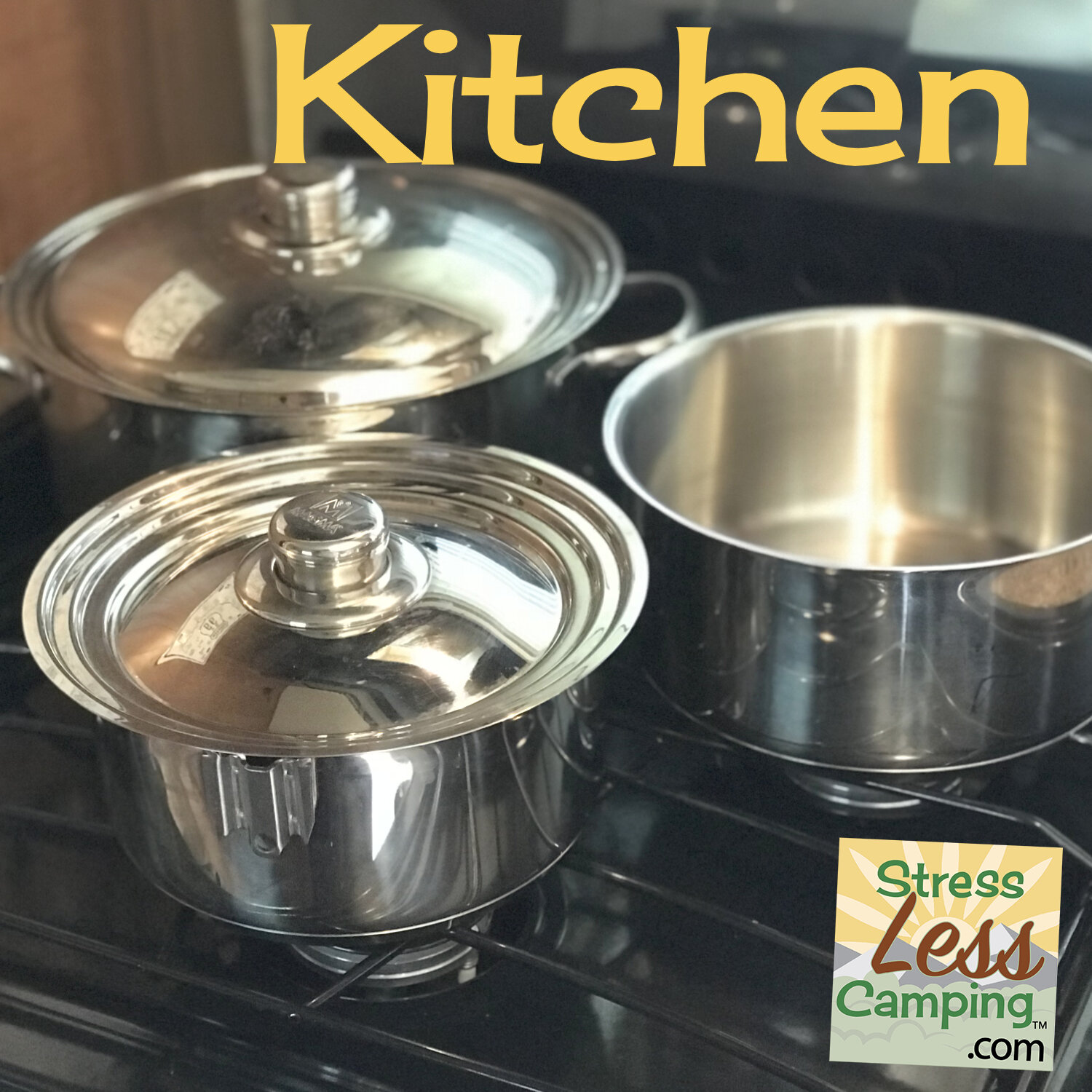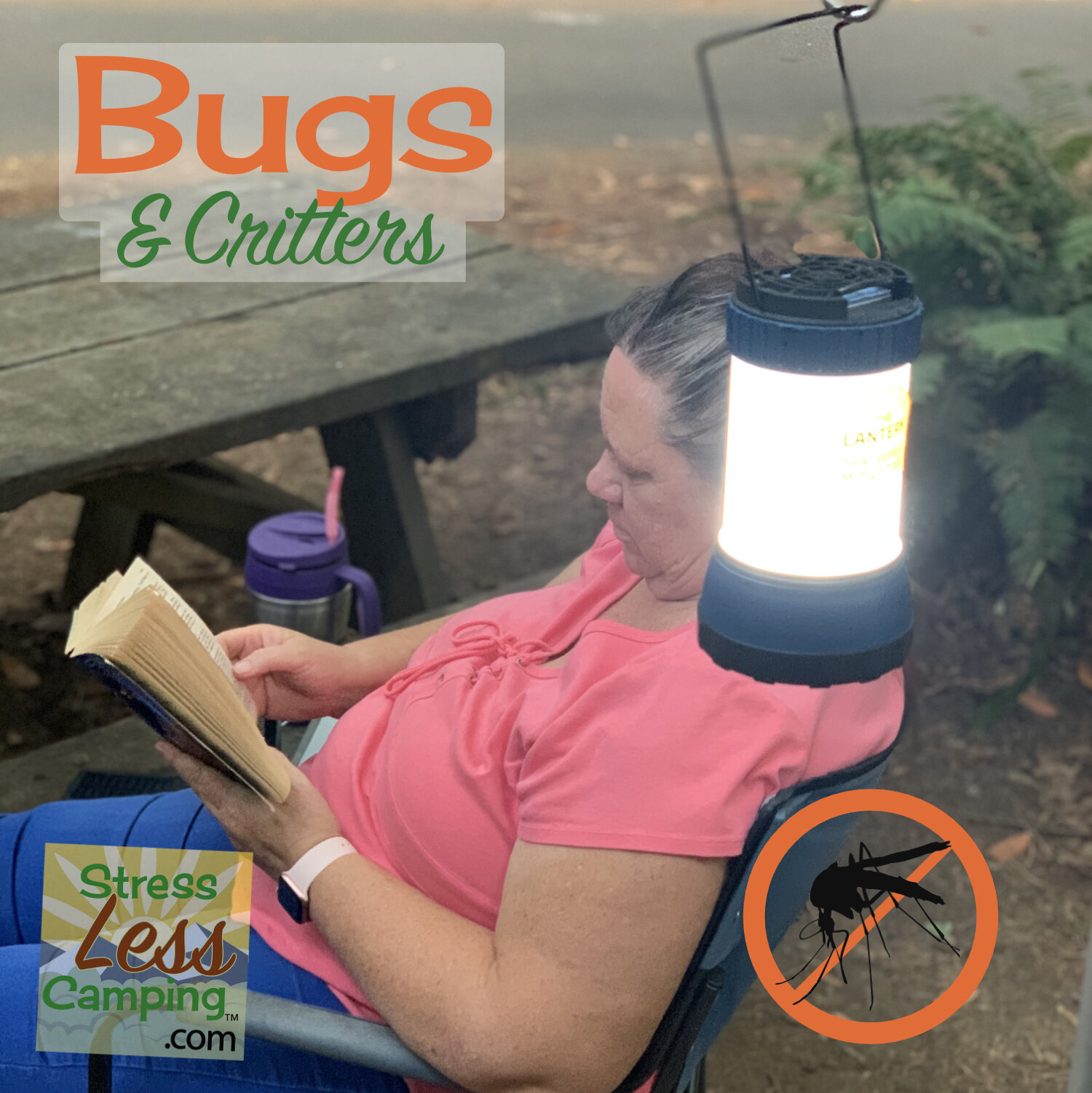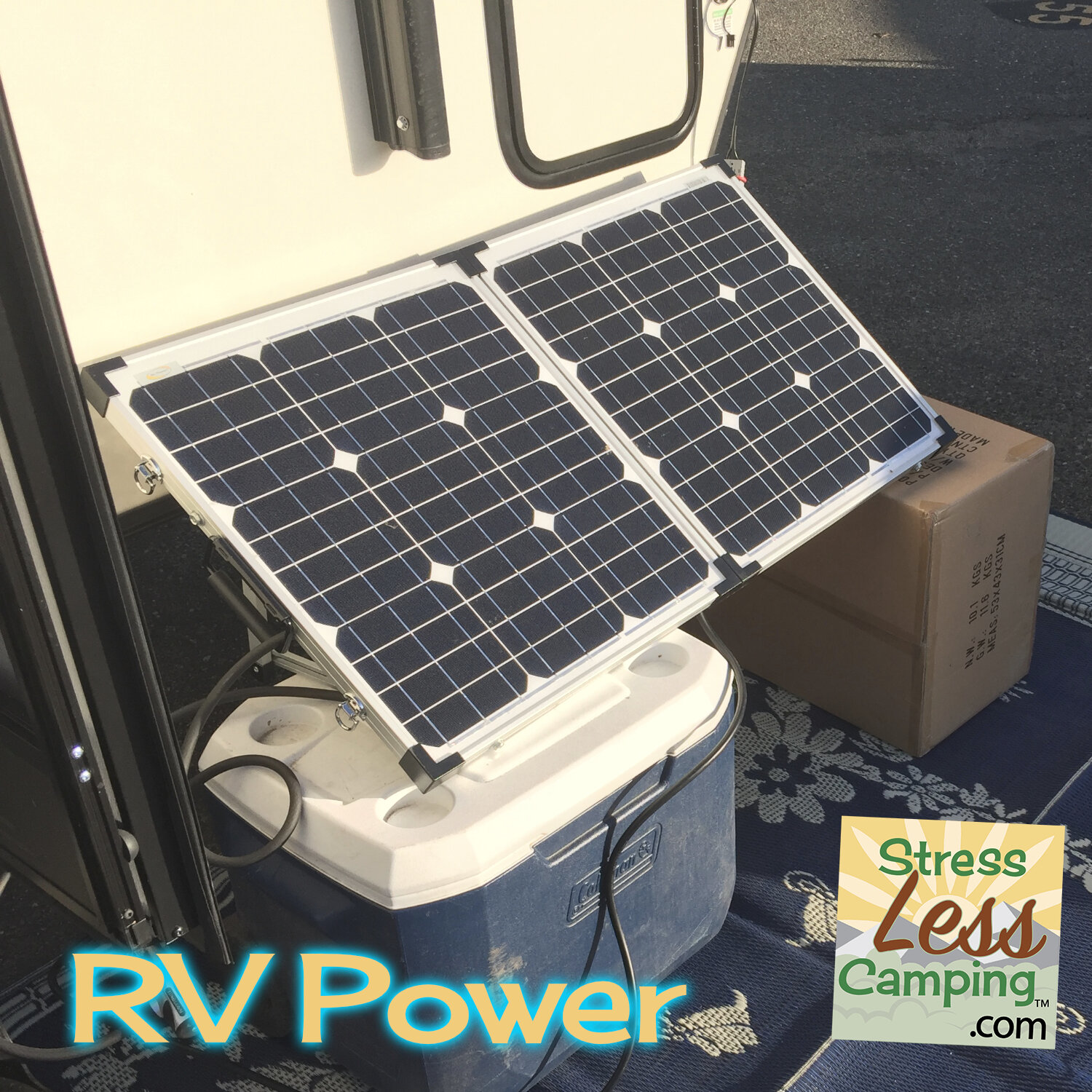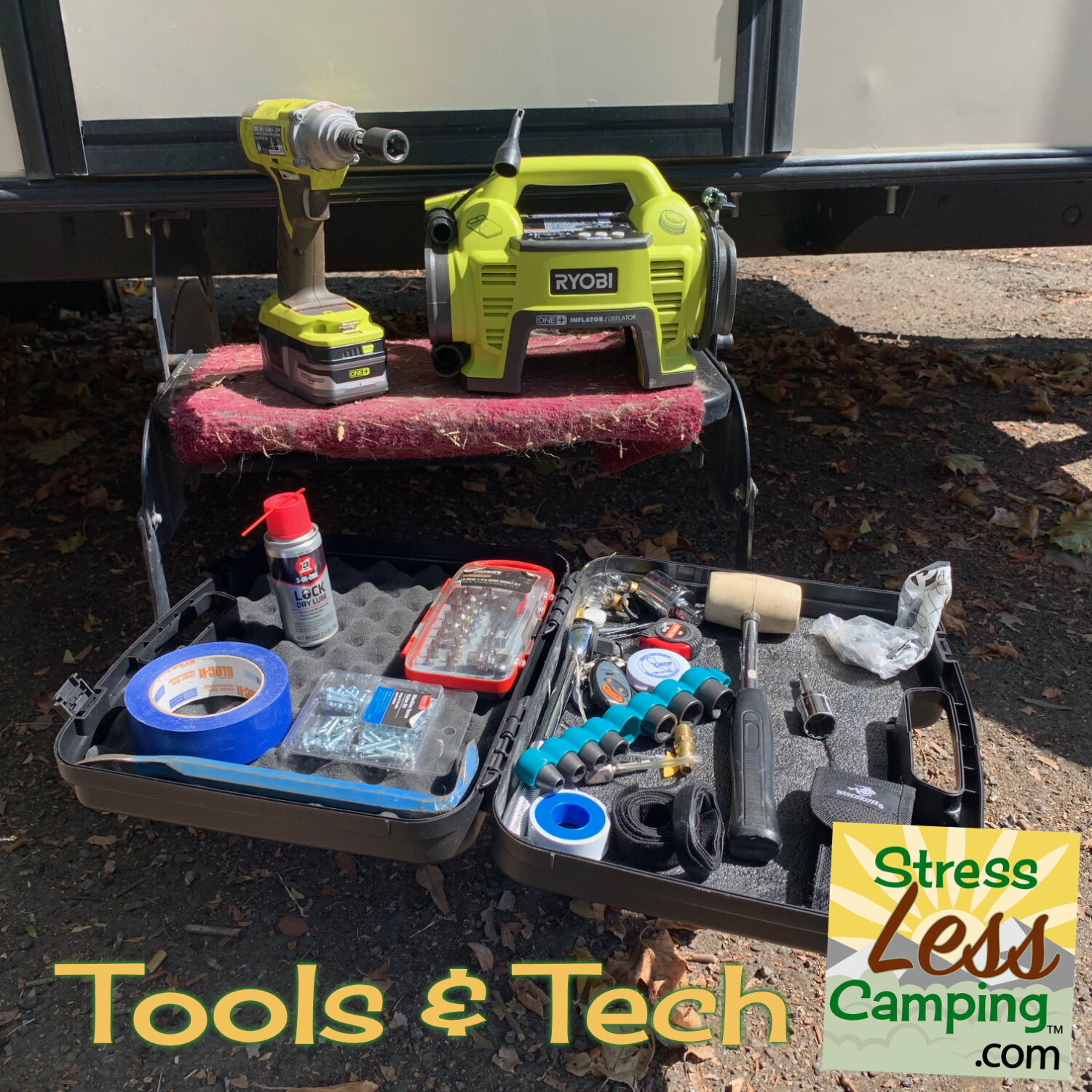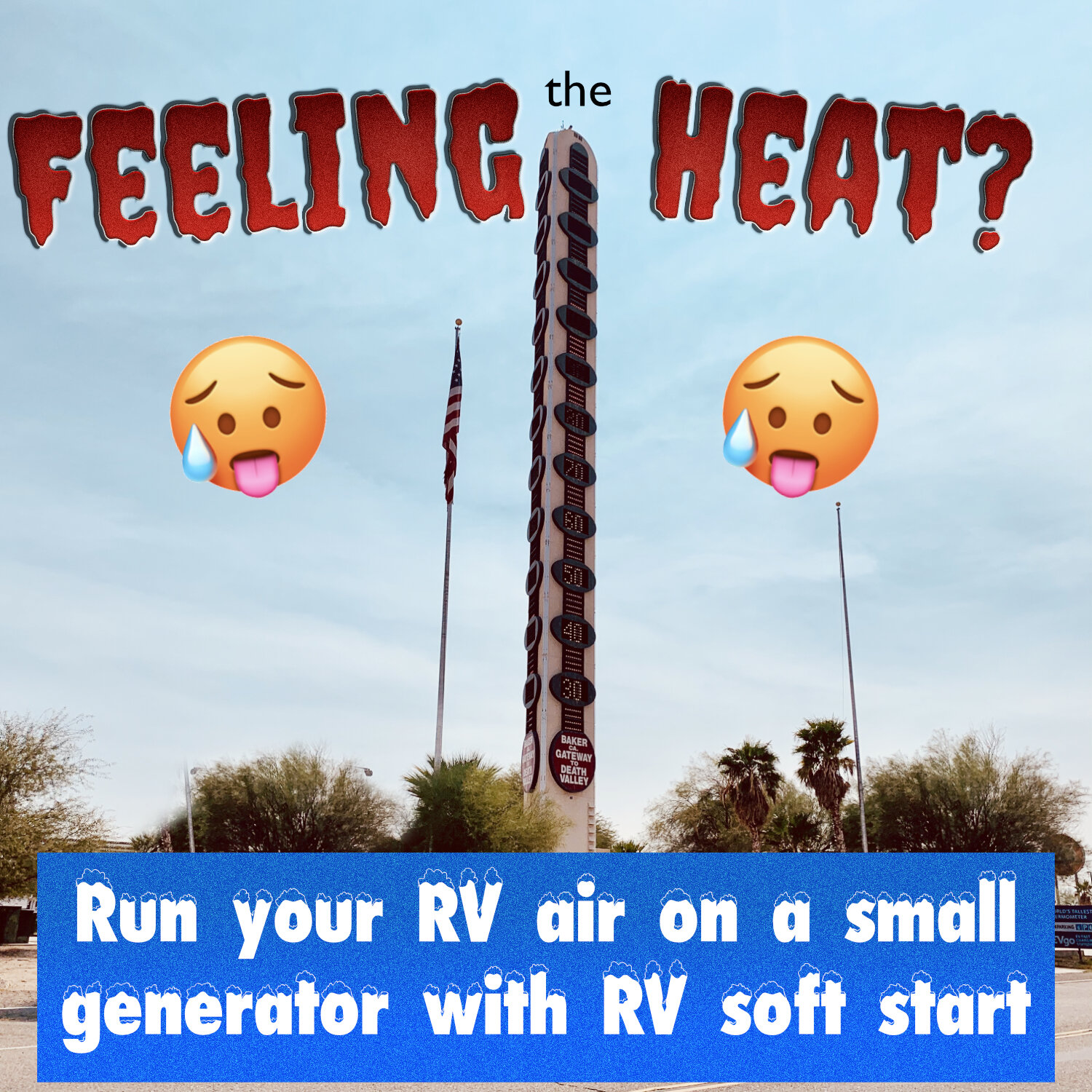Camping Showers and Toilets: A Primer
As we toured a whole bunch of RVs in the past few weeks, we saw a wide variety of bathroom, shower, and toilet configurations. For new RVers, this may cause uncertainty when choosing an RV that fits their lifestyle. Here are some descriptions and comparisons of different bathrooms, showers, and toilet options for camping and RVing.
RV “Dry” Bathroom
A dry bathroom has a toilet, sink, and shower in one room. The shower stall is enclosed within the bathroom, so the rest of the room doesn’t have to be water-proof.
In smaller RVs the manufacturer might choose to leave out a bathroom sink. Alternative sinks may include a fold-down or permanent basin within the shower, or simply omitting a bathroom sink altogether. Tony is a fan of that configuration; to him a bathroom sink is one step above a shop sink. Peggy, on the other hand, doesn’t want to drop a contact in a sink with food residue. Or mechanics grease, for that matter. She’ll keep her bathroom lavatory, thank you very much.
To make the best use of space, some RV floorplans have a split bath. This is still a full, dry bath. The shower is on one side of the RV while the toilet and sink are on the other. Sometimes (ideally) the doors each swing into the hall, closing off the bathroom as a full pass-through bathroom so there is room to dry off while still in the bathroom.
Some floorpans maximize space by employing a pass-through bathroom. These bathrooms have a door to the bedroom, and another door to the living space. Some people are very opposed to passing through the bathroom to get to the bedroom. We actually think it’s a great way to utilize space. We are also only two adults, and perhaps that makes a difference if the RV houses a larger family. To us, the complete separation of sleep and work space is an absolute bonus. We have different morning sleep requirements. Tony almost always wakes up a couple of hours before Peggy, and is very careful not to turn on lights or make sounds before Peggy gets up. We daydream about that level of separation!
RV “Wet" Bathroom
A wet bathroom in an RV combines the shower and toilet into one space. This design is most common in Class B vans, some small Class C motorhomes, and some small travel trailers. In a wet bath, the whole room is a shower so everything gets wet. This means there won't be any wooden cabinets. If there is a sink in the room, it’s also part of the shower. The advantage is the space can be a lot smaller, essentially this only required the space of a shower. The toilet (and maybe a sink) will be within the shower, so the entire area will be wet after showering. Very often, the sink will be a fold-down style that can be folded against the wall to make more shower space. There may be a cabinet; it will be constructed of plastic and will seal completely against the water. Toilet paper is often inside a cabinet or in a covered TP holder.
No indoor bathroom
Many overlanding RVs, van conversions, and definitely tents, have no dedicated bathroom space. For these campers, the minimal storage space is used for gear or living space. Some smaller RVs also have outdoor showers. Well, really, a lot of RVs of all sizes have outdoor showers. Many of them aren’t used as showers per se, but rather a place to rinse off muddy feet or bodies on humans or pets.
RVers and campers who camp and travel without a dedicated bathroom utilize public facilities such as travel stop, campground shower houses, or even maintain gym memberships for getting some exercise as well as a shower.
Alternatively, people woh have this type of camping gear may have, as we do, a shower tent (ours is the SylvanSport Privy Bivy). Inside that tent may be a cartridge toilet and camp shower that allow users the option of private facilities. Naturally, these tents are going to have some limitations. They typically don’t have floors, and shower water mainly just soaks into the ground. This may be limited or even banned in some locations. We’ll discuss cartridge toilets below.
RV Showers
For RVs with an indoor bathroom facility of some sort, there usually is a shower in either the wet bath or dry bath setups. The configuration of the shower will depend on how much space is dedicated to the purpose. In a wet bath model, of course the whole bathroom in a shower. However, that does’t mean it’s any bigger than it needs to be for the purpose. And for us larger folks, the shower simply may not be big enough. If you are shopping for an RV, step into the shower. Make sure your elbows don’t smash the walls. Can you reach the top of your head if you need to shampoo? Can you even stand up straight? Many RVs put a skylight over the shower that increased the height a little bit and make an otherwise impossible shower, possible.
In smaller bathrooms, you’ll likely see a corner shower. These vary in size but none are very large. Really test that out. We have that in our current trailer, and we made it a bit more comfortable by removing the glass doors and hanging a shower curtain. At least if I bump the outer wall, it’s made of fabric and won’t tingle my funny bone. Also, we know a lot of those curved doors have shattered and we did not want to clean that up!
When there is a bit more space, the shower may be more rectangular, and offer a bit more space. They usually have a sliding door that latches in the open position for travel. There might even be a very (very) small bathtub. Not something an adult could use, but it might be useful for bathing children or small pets. Our first TT had a bathtub. I will say that the older we get the more we like not having a tall ledge to step over. Since we won’t use it as a tub anyway, we don’t prefer the tub style showers. But that’s us. You do you!
A few manufactures include a ShowerMiser system in their showers. With this system, the water is diverted from the shower head and returned either the the water pump (if it’s being used) or to the fresh tank if hooked up to city water. The user manually turns the miser on and off. The purpose of a ShowerMiser is to recirculate the water while the pipes are purged of cold water and allowing hot water from the water heater to reach the shower head, without any excess water filling the grey tank. It’s also a useful way to save fresh water when boondocking.
The RV is usually also going to include a water heater. I don’t know of any RV that has a shower, and no water heater. The water heater may work on propane, or electricity, or both. Again, if you plan to boondock a lot, you’ll likely want to be sure to have a propane option.
Most RV manufacturers put a very basic shower head in the shower. This is easily remedied! We like the Oxygenics brand of shower head. It adds air pressure so even with low-flow water pressure, the shower feels sufficient. Some luxury RVs have been installing fancy “rain” shower heads. Those are lovely. However, if you plan to boondock a lot, they may not be practical for conserving fresh water, or grey tank space.
Another solution to conserving water in the shower is a Geyser Systems shower. It is essentially tubing and a sponge, and a whole shower only takes about a gallon of water when used efficiently. I have yet to figure out how to wash my hair using a sponge, but on days I don’t need to shampoo it’s a great alternative. Tony likes the Geyser System so much that we got a second one for the house, and he uses that every day.
The Geyser System can be purchased as an alternative to the shower head in the RV, or as a complete system with a small tank that heats the water for you. For the overloading rigs and tents, this system provides all you need for a nice outdoor shower.
Shower Alternatives
If you don’t have a place indoors to take a shower, you may still have an outside shower. Many people use this to wash off muddy feet or pets, rather than taking a full shower. However, if you want to save grey tank space and are in a place where letting the water drain on the ground is allowed, you might make use of that Privy Bivy and set up your shower outdoors. Bonus: in a location where it’s appropriate, you might leave the door open and have a beautiful view while you shower!
That Geyser System could also be rigged into the Privy Bivy for a hot shower in the privacy of a tent.
Of course there is also the option of using the bathhouse offered by the campground. Assuming you camp in campgrounds, with shower facilities available. That is not always the case so before you decide to camp without facilities, know what’s available!
A few tips for using a campground shower: take flip-flops or other waterproof shoes. Those showers are not likely cleaned every time they are used, so you want to protect your feet from anything the previous user may have left behind. Carry your supplies in a bag and hope there is at least one hook to hang the bag. Again, there is no predicting what’s available from one location to the next. Ladies, get yourself a loose-fitting cotton or terrycloth dress so you don’t have to step into any clothing. Just slip the dress over your head, and return to your camper to put on your clothes.
RV Toilets
RVs with bathrooms may utilize a number of toilet designs.
RVs with black tanks, which include most but not all! - will have a foot-flush style of toilet. With this design, the waste drops out of the toilet directly into the black tank by simple gravity. Unlike most drains, there is no “P-trap” from the toilet to the black tank. Although this article wasn’t meant to be about black tanks, here is our biggest tip: Always flush plenty of water to keep the waste from drying out and forming a “poop pyramid.” It’s not a bad idea to keep a little bit of water in the basin of the toilet, to keep the seal from drying out. If the seal does dry out, water won’t stay in the bowl, and odors won’t stay in the black tank. The seal is replaceable if this does happen to you.
I guess I do have one more black-tank tip: The sensors are hardly ever accurate. Tiny bits of paper or other debris might stick to a sensor and make the sensors tell you that the tank is more full than it is. You get to know your limits after some use. If you have a tank flush, it can help but is not perfect.
The foot-flush toilets may be constructed of plastic and porcelain. While plastic is lighter and less apt to break, it also feels cheap and had a tendency to be very squeaky and many people do not like them. It’s not terribly hard to replace a toilet, so many people to upgrade to porcelain.
It is possible to add a bidet to these toilets, if you are a fan. We were offered a RV bidet to test out. Neither of us had used one before, so we accepted the challenge. We liked it a lot, and finally took the plunge, so to speak, and bought a bidet for our sticks and bricks as well.
Some RVs, usually the smaller ones, use a cassette toilet. From above, it might not seem very different from the gravity fed toilets. However, cassette toilets are used in RVs where there is not a black tank. The tank is actually part of the cassette toilet, and usually accessed from a panel on the outside of the RV. When the tank gets full, you just pull it out and carry it to the dump station, or even a toilet. These tanks are usually about five gallons, so may weigh up to 40 pounds that you’ll have to carry to where you are dumping. That’s a good thing to keep in mind if you have limited strength.
A final word about RV toilets, black tanks, and chemicals. Know that most of the components are made of plastic. Plastic does not like bleach; bleach will eat away at the plastic and ruin your toilet or black tank. So, we recommend that you use a cleaning product that is bleach-free.
Portable Toilets
If you don’t have an RV with a toilet, one solution is to put a camp portable potty in your Privy Bivy - or out in the open if the surroundings allow such a thing! Porta-potties can be stored in fairly small spaces, and as the name implies, can be moved to wherever it’s convenient to use them. These are dumped similarly to the cassette toilet, and have about the same 5-gallon capacity.
There are also lots of options for dry portable toilets. These may utilize bags, absorbent (often kitty litter), or other methods of containing or composting waste. They are available in a variety of shapes, sizes, and materials. I’ll let you do your own research on those. I am not a big fan. Thus, our purchase of an RV with a bathroom in it!
If you want to clean the cartridge of a cassette or portable camp toilet, you’ll have to do that where it’s safe and allowed. Know that you are rinsing human waste from that tank, so please don’t do it on the campground lawn!



















